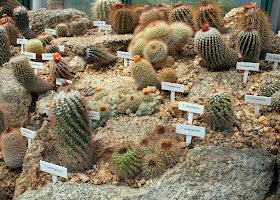 |
| "The End is Near" back in 1984. The World didn’t end then either. |
“You could make up a tale of geologic and sciency absurdity, describing in the most insanely over-the-top manner how the world/universe will end” suggested Lockwood.Ann of Ann's Musings on Geology & Other Things thinks the End will come when Hell freezes over. I can relate to this as I heard a lot about it as a kid (my mom was from the South). The actual End probably will be the moment Ann describes when Hell (Earth’s core) solidifies and disables our electronic devices. We will be disconnected, alone ...
Jazinator at The Geology P.A.G.E. provides a graphic description of Earth being struck by asteroids and splitting like a head of lettuce slammed on a table (see post for more gory details). Possible safe havens include the Christmas Islands, Easter Island and of course the Intercourse Islands. I think Laramie would be a safe haven too, as our horrendous wind would deflect the asteroids.
Lockwood himself convincingly argues the End will come due to our messing with the Higgs boson. The Earth will turn inside out, bringing short-term benefits but disaster in the long run. Of course, geophysicists will be very excited at the opportunity to see the Earth’s insides up close. And the NRA is preparing to defend us ... whew, I was worried there for a moment!
Personally, I envision a mystical and entertaining End, one that could be appreciated by anyone with enlightened awareness of impermanence ... or the right drugs. Here in Wyoming, we will have front row seats when Yellowstone explodes in a catastrophic eruption several orders of magnitude larger than any known from the geologic record. Initially there will be lots of color and warmth, and flowers of all kinds will bloom simultaneously. Those not terrified by the End will be dancing in the streets and on dirt roads, in meadows and cow pastures, and on the shores of plains lakes and stockponds, celebrating the spectacular final episode of the World. Quite miraculously, in the mountains there will be fresh deep powder on the slopes and miles of well-groomed cross-country ski trails. But all things must end. After just a few days, Yellowstone will emit a gargantuan burp of euphoria-inducing gas. We will all happily swoon and then be peacefully frozen stiff with the onset of a prolonged very cold and very dark volcanic winter. In other words, I’m an optimistic person.
 |
| Welcome to Wyoming -- where the End will begin. |




















































